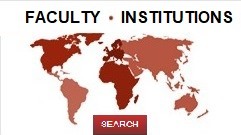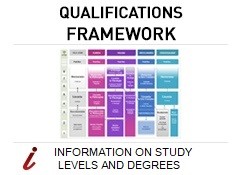Joint degrees - guidelines
A “Joint degree” is a shared study project, based on a specific program, through which two or more academic institutions work in synergy, as if they were one single institution. In order to implement such projects, a specific agreement or program is required, which must be approved by concerned institutions and relevant State authorities (or Agencies).
The reasons why this cooperation is recommended at international level are the following:
• to make better use of human, scientific, and economic resources in order to avoid waste;
• to develop proposals for specialty studies, which cannot be undertaken by one single academic institution; to provide joint study opportunities aimed at promoting student mobility;
• to eliminate current obstacles to title recognition, as far as possible.
Regarding the issuing of these kinds of diplomas, right now there are three levels or ways, that are used by member countries involved in the Bologna Process:
§ A double diploma: diploma A and diploma B. They are two separate diplomas, that are released by each concerned institution. In each Institution’s Diploma Supplement (i.e. the document that provides an analytical description of the academic studies completed by each student, which the latter might request from the University at the end of his/her studies), the following information must be reported: that it is a joint degree; that the student did not follow two different study programs; that the double diploma is issued only in order to ensure the recognition of academic titles in two different higher education systems. This kind or arrangement is determined by the need to make the diploma useable. In some countries, in order to award a similar diploma to students coming from other countries, an additional study year is required.
§ In case of joint degrees, one single parchment diploma is issued where both academic institutions are mentioned, after they have agreed on an academic career.
§ A third option, that can be considered in theory but needs to be explored further, refers to degrees that cannot be issued by each academic institution, ordinarily qualified to issue them, but are issued by a new and separate institutional entity (e.g. degrees that are issued by so-called European Joint Universities, which could be consortia of different university institutions).
The orientation of the Dicastery
Considering the prospects and consequences related to the use of Joint degrees, the Holy See (through the Dicastery) basically views the matter positively due to the following reasons:
• degrees can be recognized more easily;
• forms or cooperation and rationalization can be promoted between ecclesiastical Faculties, especially in Rome, and more qualified research and specialist projects can be developed;
• an attitude of collaboration and dialogue between ecclesiastical Faculties and civil institutions is favored and encouraged, especially in view of higher qualifications for the laity;
• these tools can facilitate the development of evangelizing actions, drawing students to pursue ecclesiastical subjects and break new cultural and intellectual ground.
Legislation
The Church’s existing academic legislation does not envisage academic degrees that are issued jointly by one or more Faculties or Universities. However, we must consider the evolution of international regulations on this point, which provide for agreements between academic institutions also concerning degrees, and the Holy See’s participation in such agreements. Therefore, in case of joint degrees, the Dicastery has the power to introduce exceptions to Veritatis gaudium, waiting for new regulations to be introduced. Currently, these exceptions can be granted “ad experimentum” and “ad casum”, thus preserving the “mens” of the unity of the educational process.
Since Joint degrees entail all the canonical effects which stem from ecclesiastical academic degrees, we must make sure that joint study programs completely comply with the relevant norms on ecclesiastical studies.
Current practice
The Dicastery has approved a number of academic collaborations between ecclesiastical and civil institutions which, however, only pertain to Doctorates, and is now looking into other second cycle projects (i.e. licentiates).
Regarding such cases, the Dicastery has opted for the following course of action:
• support experiments approved by the Dicastery;
• closely follow the evolution and development of such cases;
• evaluate outcomes, using experts.
Basically, considering ecclesiastical academic institutions’ geographical distribution in very different civil and legislative contexts, the Dicastery believes that joint degrees can be implemented based on four fundamental criteria, that were already applied in the past:
a) there must be a real reason to promote a joint degree and it must be clearly substantiated;
b) agreements between two or more interested academic institutions must be submitted to the Congregation, with related documents and formal requests, and must be specifically approved by the Congregation;
c) agreements have to clearly indicate planned approaches and steps, in addition to economic and organizational aspects;
d) Joint degrees must be described in both academic institutions’ Diploma Supplements.
When academic degrees with canonical value are issued (i.e. degrees that are issued under the authority of the Holy See), they always need to be explicitly approved by the Dicastery as a “condicio sine qua non” for their validity and ensuing recognition.





